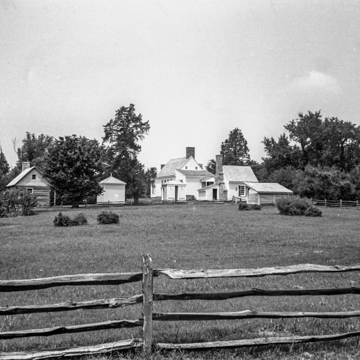After accomplishing his pivotal work in establishing a new nation, and after serving as the Commonwealth of Virginia's first governor, Patrick Henry devoted his remaining energies to providing inheritances for his eleven (of seventeen) surviving children. He assembled a 2,920-acre plantation overlooking the Staunton River at the western fringe of Charlotte County and moved here in 1794 to oversee its development and to continue in private law practice. Unlike the popular image of the houses of Virginia's Revolutionary War leaders, the Red Hill compound consisted of a modest main house with numerous outbuildings informally arranged around it. After Henry's daughter Lucy Gray Henry Harrison acquired the house, it was greatly enlarged by Philadelphia architect Keen, who was noted for his suburban and country houses. The house burned in 1919. Fortunately, Johnson of Lynchburg had been Keen's resident architect and had kept measurements and sketches of the original house and outbuildings that were removed during the enlargement. The reconstructed house is a small, side-hall frame dwelling, with informal wings to each side. During the 1960s, Henry's law office, originally an overseer's office and the only original building surviving, was restored. A two-room, one-story frame cottage with a center chimney, it stands northeast of the house. Other structures—kitchen, smokehouse, cook's cabin, privy, and carriage house— some log, some frame, have been recreated on their original sites.
In 1976, a Williamsburg-styled museum/ visitors' center was completed from designs by Fauber. Refurbishment and repairs were carried out on the house in 1991–1992 by Lahendro and the law office by Neblett. A large addition to the museum, designed by Neblett, opened in 1996. Although some of the reconstructed buildings reflect the 1950s preservation ethic, in which atmosphere often prevailed over authenticity, in general the overall effect of an early Southside plantation is successful. The Patrick Henry Memorial Foundation operates Red Hill as a museum and shrine to the American patriot. Henry died in 1799 at Red Hill, and although the stone covering his grave is a replacement of the original, the carved message it carries states, “His fame his best epitaph.”




















